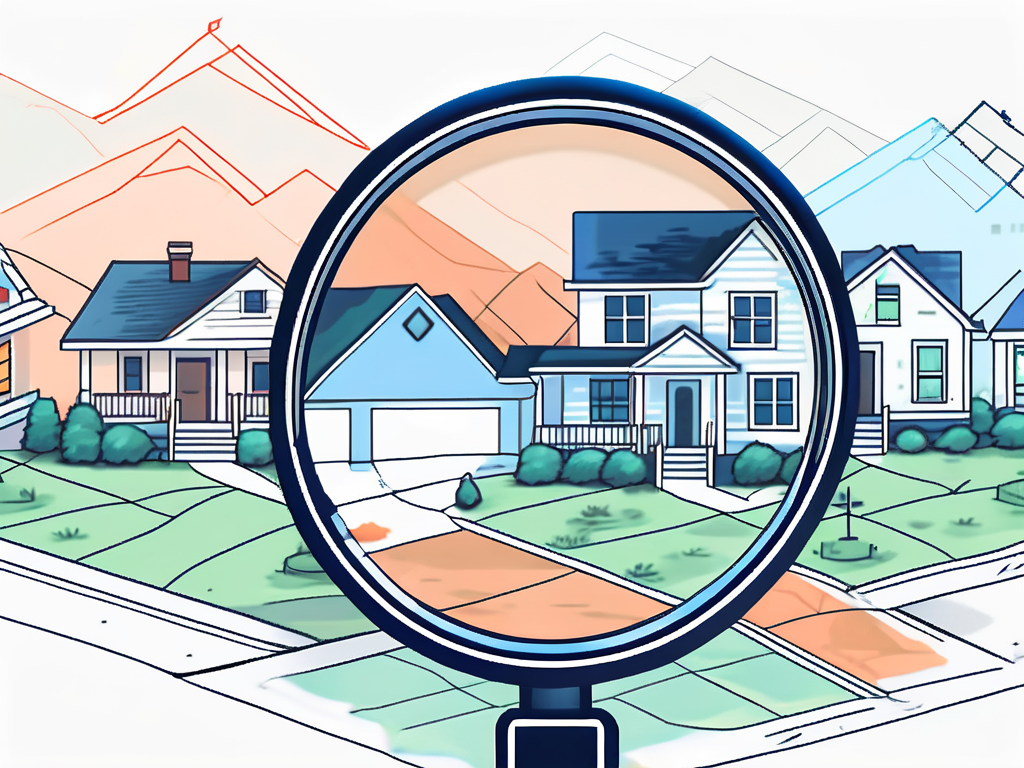Mastering Zillow: Unraveling the Algorithm for Strategic Pricing


In the digital age, where technology permeates every aspect of our lives, it comes as no surprise that real estate has also experienced a digital revolution. As more homebuyers and sellers turn to online platforms to navigate the housing market, an in-depth understanding of these platforms becomes crucial for success. One such platform that has gained immense popularity is Zillow. With its user-friendly interface and vast database of properties, Zillow has become a go-to resource for homebuyers and sellers alike. However, behind the scenes lies a complex algorithm that determines property values and pricing. In this article, we will unravel the Zillow algorithm and explore how it can be strategically leveraged for pricing success.
Understanding the Zillow Algorithm
At its core, the Zillow algorithm is designed to estimate the value of a property based on a variety of factors. Understanding how this algorithm works is essential for both homebuyers and sellers to make informed decisions. Let's delve into the basics of Zillow's pricing algorithm.

The Basics of Zillow's Pricing Algorithm: Zillow's algorithm takes into account a range of data points, including property characteristics, location, and recent sales in the area. By analyzing this data, Zillow generates an estimate called the Zestimate, which serves as the baseline value for a property.
How Zillow's Algorithm Differs from Others: While other real estate platforms use similar algorithms to estimate property values, Zillow stands out for its comprehensive approach. Zillow's algorithm incorporates a larger dataset, which enables it to provide more accurate estimates. Additionally, Zillow updates its algorithm more frequently, ensuring that its estimates reflect the current market conditions.
Factors Considered in Zillow's Algorithm: In addition to property characteristics and recent sales, Zillow's algorithm also takes into consideration market trends, neighborhood data, and even the proximity to amenities such as schools, parks, and shopping centers. This holistic approach provides a more nuanced understanding of a property's value, giving users a comprehensive view of the real estate market.
The Evolution of Zillow's Algorithm: Over the years, Zillow has continuously refined and improved its algorithm to enhance the accuracy of its estimates. By incorporating machine learning and artificial intelligence technologies, Zillow's algorithm can now adapt to changing market dynamics in real-time, providing users with up-to-date and reliable information. This evolution has solidified Zillow's position as a leading authority in the real estate industry, trusted by millions of users nationwide.
The Impact of Zillow's Algorithm on Property Pricing
Zillow's algorithm has a profound influence on property pricing. Whether you're a seller looking to accurately price your home or a buyer evaluating a listing, understanding the factors that influence Zillow's property estimates is crucial.

Factors Influencing Zillow's Property Estimates
When it comes to Zillow's property estimates, several key factors play a significant role:
- Property characteristics: Zillow closely examines the features and amenities of a property, such as the number of bedrooms and bathrooms, square footage, and overall condition. These details have a direct impact on the property's estimated value.
- Location: The saying "location, location, location" holds true even in the digital realm. Zillow's algorithm takes into account the neighborhood's desirability, proximity to amenities, and access to quality schools.
- Comparable sales: Recent sales in the area provide valuable insights into the current market conditions. Zillow's algorithm considers the sale prices of comparable properties to assess the value of a given property.
The Role of Location in Zillow's Algorithm
When it comes to real estate, location is often a determining factor in property values. For Zillow, location plays a vital role in its algorithm as well. The algorithm takes into account the geographical location of a property and factors such as the local housing market, regional economic trends, and even natural disasters. By incorporating all these factors, Zillow aims to provide users with accurate estimated property values.
Let's delve deeper into the role of location in Zillow's algorithm. The algorithm not only considers the immediate surroundings of a property but also takes into account the broader context of the area. It analyzes the neighborhood's overall appeal, including the presence of parks, shopping centers, and other amenities that enhance the quality of life for residents. Additionally, Zillow's algorithm pays attention to the accessibility of transportation networks, such as highways, airports, and public transit, as these factors can greatly impact the desirability of a location.
Furthermore, Zillow's algorithm takes regional economic trends into consideration. It looks at factors like job growth, income levels, and the overall economic stability of the area. A thriving local economy can contribute to increased property values, while economic downturns may have the opposite effect. By factoring in these economic indicators, Zillow aims to provide users with estimates that reflect the current market conditions accurately.
Another crucial aspect that Zillow's algorithm considers is the occurrence of natural disasters. The algorithm takes into account the historical data of natural disasters in a particular area, such as hurricanes, earthquakes, or floods. Properties located in areas prone to such events may have their values adjusted accordingly to reflect the potential risks associated with living there. This ensures that Zillow's estimates are as comprehensive and accurate as possible.
In conclusion, Zillow's algorithm goes beyond just property characteristics and comparable sales. It takes into account the location of a property, considering factors such as neighborhood desirability, access to amenities, regional economic trends, and even the occurrence of natural disasters. By incorporating these elements, Zillow aims to provide users with estimates that are not only accurate but also reflect the broader context of the real estate market.
Strategies for Optimizing Your Property's Zillow Price
As a seller, optimizing your property's Zillow price is crucial to attract potential buyers. To help you in this endeavor, here are some strategies to consider:
Tips for Accurate Property Listing Information
Accurate and detailed property listing information is essential to ensure an accurate Zestimate. The following tips can help you provide the necessary information:
- Fill out all relevant fields: Provide detailed information about your property, including the number of bedrooms, bathrooms, square footage, and any unique features.
- Include recent updates: Highlight any recent renovations or upgrades that have been made to the property, as this can positively impact its estimated value.
- Upload high-quality photos: Sharp, well-lit photos can enhance your listing and attract more potential buyers.
The Importance of High-Quality Property Photos
In the digital age, where visuals play a significant role, high-quality property photos are essential for attracting interested buyers. Consider hiring a professional photographer or using advanced smartphone cameras to capture your property in the best possible light. Remember, a picture is worth a thousand words, and in the case of Zillow, it could even be worth thousands of dollars.
Furthermore, when taking photos of your property, make sure to declutter and stage each room to showcase its full potential. Buyers are more likely to be drawn to clean, well-organized spaces that allow them to envision themselves living in the home. Additionally, consider capturing images of any unique selling points your property may have, such as a stunning view, a spacious backyard, or a newly renovated kitchen.
Utilizing Virtual Tours and 3D Walkthroughs
Incorporating virtual tours and 3D walkthroughs into your property listing can provide potential buyers with a comprehensive view of your home, even if they are unable to visit in person. These interactive features allow viewers to navigate through the property as if they were physically present, giving them a better sense of the layout and flow of the space. By offering virtual tours, you can attract out-of-town buyers and busy individuals who may not have the time to schedule an in-person viewing.
Navigating Zillow's Algorithm Updates
Just like any digital platform, Zillow's algorithm is subject to updates and changes. As a savvy seller or buyer, keeping up with these updates is crucial to make the most of Zillow's algorithm.

Understanding the intricacies of Zillow's algorithm updates can give you a competitive edge in the real estate market. These updates are often aimed at enhancing user experience, providing more accurate property valuations, and improving search results for users.
Keeping Up with Zillow's Algorithm Changes
Zillow continuously refines its algorithm to improve the accuracy of its estimates. Keeping an eye on news releases, blog posts, and official updates from Zillow itself can help you stay ahead of the curve.
Moreover, joining online forums or communities dedicated to real estate trends and Zillow updates can also be beneficial. Engaging with other users and industry professionals can provide valuable insights and interpretations of the algorithm changes.
Predicting Future Changes to Zillow's Algorithm
While predicting the exact changes to Zillow's algorithm is impossible, considering overarching trends in the real estate industry can provide insight into possible future changes. Stay updated on industry news, technological advancements, and market trends to anticipate any potential algorithm changes.
Additionally, analyzing Zillow's past algorithm updates and the reasons behind them can offer clues about the direction in which the platform is heading. By studying these patterns, you can make informed decisions about your real estate strategies and adapt to future algorithm changes proactively.
Conclusion: Leveraging Zillow's Algorithm for Success
In today's digital world, mastering Zillow's algorithm is essential for sellers looking to optimize their property prices and buyers seeking accurate estimates. By understanding the basics of Zillow's pricing algorithm, recognizing the impact of location and other influential factors, and implementing strategies for success, you can leverage Zillow's algorithm to your advantage. Keep these key takeaways in mind and embark on your journey to strategic pricing with Zillow.
Key Takeaways for Mastering Zillow's Algorithm:
- Understand the basics of Zillow's pricing algorithm.
- Recognize the key factors influencing Zillow's property estimates.
- Optimize your property's Zillow price through accurate listing information and high-quality photos.
- Stay updated on Zillow's algorithm changes and anticipate future updates.
Final Thoughts on Strategic Pricing with Zillow
Zillow's algorithm provides invaluable insights into property pricing, giving both sellers and buyers a powerful tool. By mastering Zillow's algorithm, you can unlock the potential for success in the competitive real estate market. Embrace the opportunities it presents, and may your journey towards strategic pricing be filled with fruitful outcomes.
Unlock Your FSBO Mastery with SmartSellersMatch.com
Now that you're equipped with the knowledge to navigate Zillow's algorithm for strategic pricing, take the next step in your home-selling journey with SmartSellersMatch.com. Our platform is dedicated to empowering sellers like you with comprehensive tools and insights. Dive into our free FSBO course and gain access to a wealth of resources, including a library of essential documents and our innovative FSBO Assistant chatbot. Take the free FSBO Course today and transform your home selling experience into a successful and rewarding venture.




